In the world of business process automation, clarity and control are essential. Yeeflow offers powerful tools to help workflow designers model complex scenarios with ease. Among these are two distinct actions under the Logic and Flow group: Inclusive Gateway and Connector.
While both can be used to converge or direct flow based on conditions, they serve very different purposes. One manages synchronization; the other simplifies flow logic. Understanding these differences is crucial to designing robust, scalable workflows.
This article compares the Inclusive Gateway and Connector actions, explores when and how to use each, and provides real-world examples to guide you.
🔍 What Are Inclusive Gateway and Connector?

✅ Inclusive Gateway: Coordinated Execution with Conditional Logic
🔧 Purpose
The Inclusive Gateway allows multiple incoming paths to merge and continues execution only after all active branches are completed. It then evaluates conditions on outgoing branches to determine which paths to follow—potentially more than one.
This gateway is ideal for parallel approvals, conditional evaluations, and process merging.
📌 Key Behaviors
- Waits for all connected incoming branches before proceeding.
- Executes only once after all inputs are received.
- Evaluates conditional logic to determine the next steps.
- Complies with BPMN 2.0 standard.
🧠 When to Use
- Multi-step approvals that require input from multiple roles.
- Synchronization points in parallel processes.
- Cases where execution should happen only after all tasks complete.
🧪 Example Scenario: Leave Approval
An employee's leave request must be approved by both their manager and HR. Only after both have responded does the system check the leave duration and decide the next steps.
Form Submitted → Manager Approval →
↘
Inclusive Gateway → [If Days > 2 → Dept Head Approval]
↗
HR Approval →
The Inclusive Gateway ensures both approval tasks are done before proceeding.
🔄 Connector: Simplifying Flow Logic Without Synchronization
🔧 Purpose
The Connector is not a gateway. Instead, it's a logic utility that helps consolidate and simplify workflows where multiple actions must route into the same conditional logic—without waiting or synchronizing.
It is especially useful in cases where different paths (e.g., Actions A, B, and C) share identical conditional branches. Instead of duplicating the same condition logic in each action, you can route them all into a single Connector, define the conditions once, and manage flow more cleanly.
📌 Key Behaviors
- Does not wait for all incoming paths.
- Executes downstream logic immediately when each incoming path arrives.
- Executes once per incoming path (i.e., could run multiple times).
- Simplifies condition maintenance across complex flows.
⚠️ Important Note
If three actions connect to a Connector:
- It will execute the following branch three times, once for each incoming path.
- To ensure the downstream logic executes only once, make sure only one path leads to the Connector.
🧠 When to Use
- When multiple branches share the same condition logic and output actions.
- To reduce condition maintenance across multiple actions.
- In workflows where synchronizing incoming paths is unnecessary or undesired.
🧩 Real-World Example: Expense Approval Routing
Scenario
You have multiple approval steps based on amount thresholds, and the same logic applies to several different task paths (e.g., Department Manager Review, Supervisor Review, and Finance Escalation—executed in parallel or sequentially depending on business rules).
Without Connector
Each of these tasks must independently define:
If Amount > 2000 → Branch AIf Amount ≤ 2000 → Branch B
Any change to the threshold condition must be updated in all branches.
With Connector
Instead, route all branches into a Connector that defines the condition just once:
Action A (Department Manager Review)
Action B (Supervisor Review)
Action C (Finance Escalation)
↓ ↓ ↓
→ Connector →
├─[Amount > 2000] → Approval Group A
└─[Amount ≤ 2000] → Approval Group B
Now, if the threshold changes from 2000 to 2500, you only update the condition once in the Connector—no need to touch A, B, or C.
🔍 Inclusive Gateway vs. Connector – A Detailed Comparison
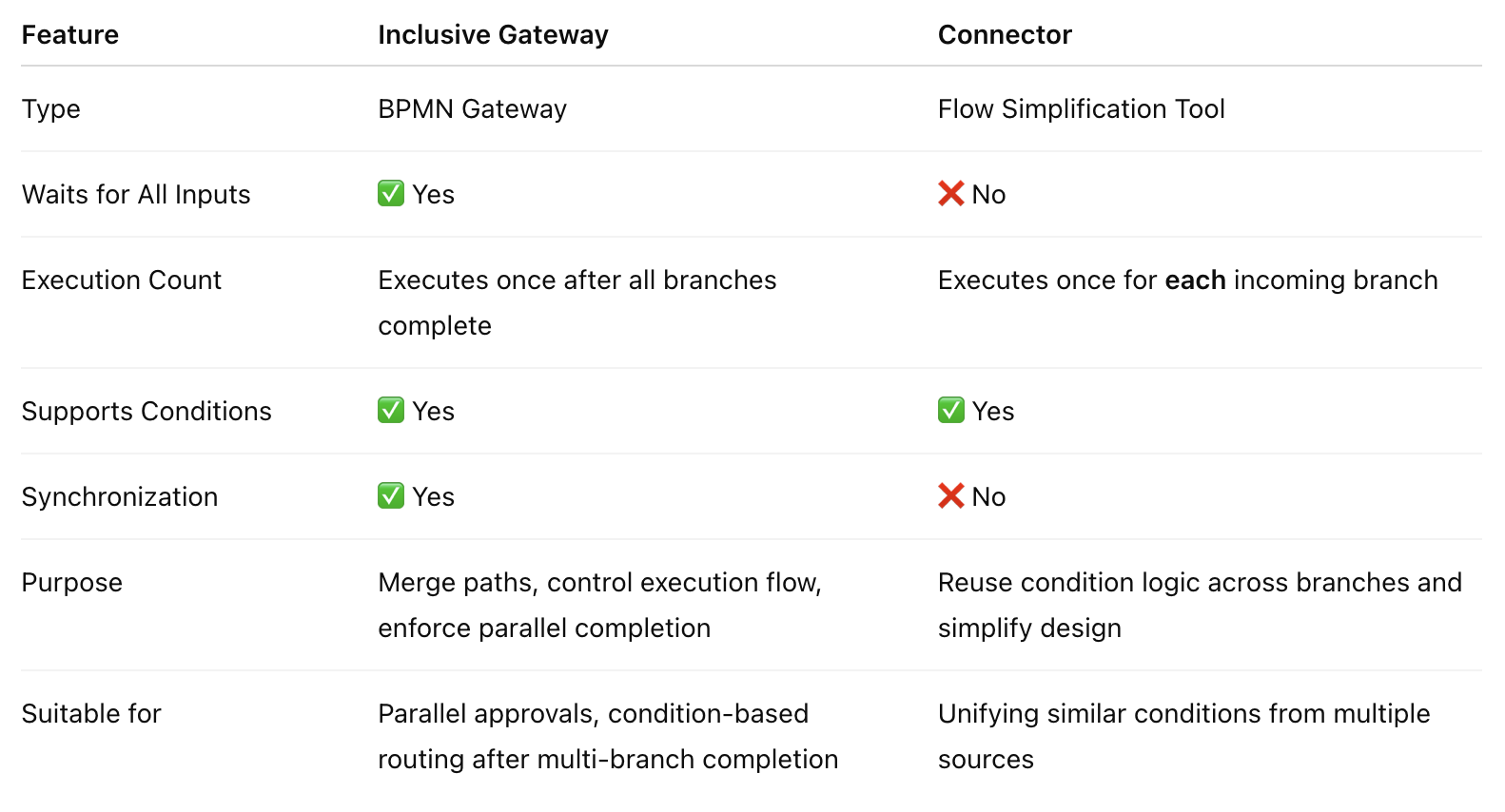
🏨 Analogy: Entering a Hotel
To make the difference more intuitive, let’s use the metaphor of entering a hotel to illustrate how Inclusive Gateway and Connector behave differently.
🛡 Inclusive Gateway – Like a Security Guard at the Entrance
Imagine a hotel with a security guard at the door. You and your friends are invited to an event inside—but the rule is: you can only enter after everyone in your group has arrived.
- The guard checks each person as they arrive but does not let anyone in until all members are present.
- Once everyone has arrived, he allows the whole group to enter together—and only once.
This reflects how the Inclusive Gateway works:
- It waits for all incoming branches (people).
- It executes only once, after all paths have arrived.
- It uses conditions to determine what to do next, after everything is synchronized.
🚪 Connector – Like an Automatic Door Without a Guard
Now imagine a hotel with a rotating glass door, and no guard at all. Whoever arrives can enter immediately, no need to wait for anyone else.
- The door opens and spins for each person who comes in.
- If three people arrive at different times, the door opens three times.
This is how the Connector works:
- It does not wait—the moment a path reaches it, the following steps trigger immediately.
- If multiple paths connect to it, it may execute the next logic multiple times.
- It’s best used for simplifying condition logic, not for synchronization.
🧠 Pro Tip: If you want the downstream flow from a Connector to only happen once, make sure it has only one input path. Otherwise, it will act on every trigger.
🛠 Best Practices for Using Each
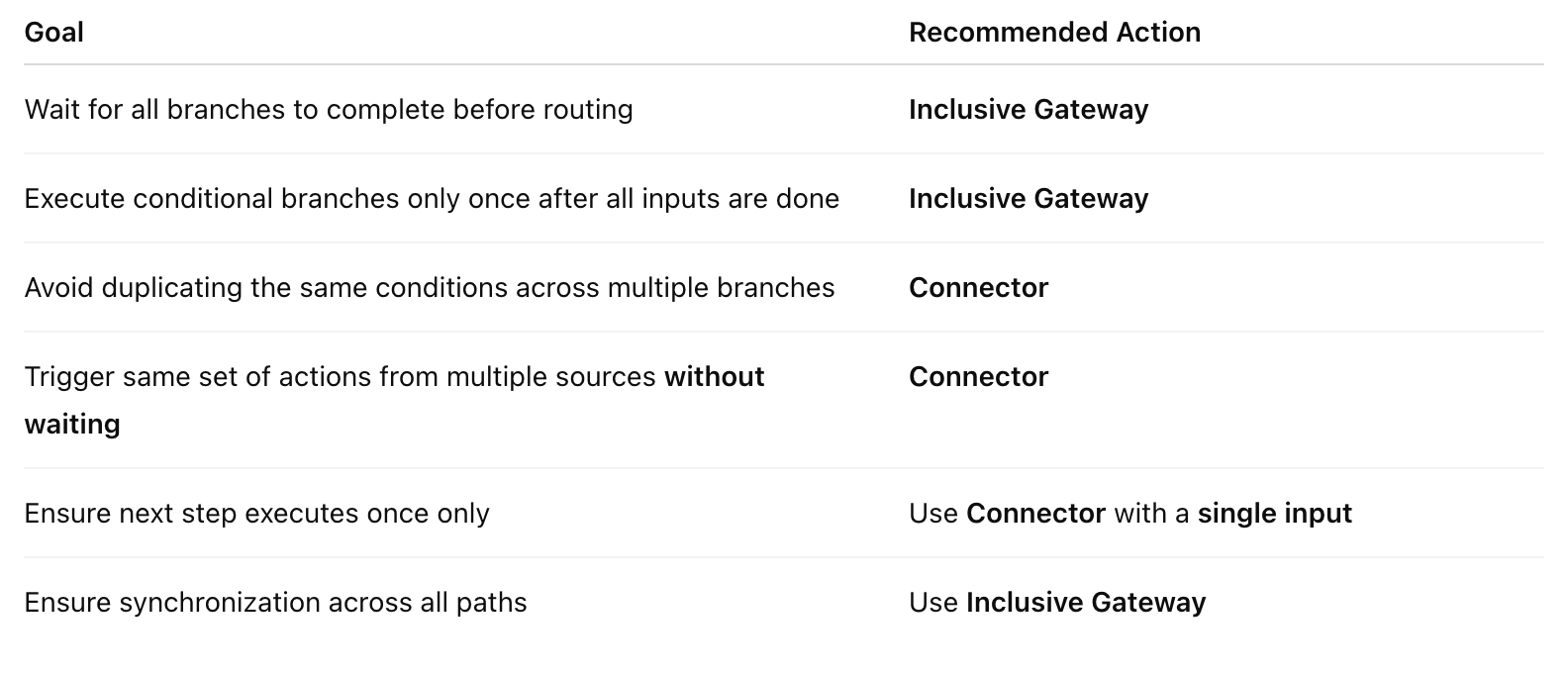
📷 Visualizing the Differences
Inclusive Gateway Behavior:
- Waits for all incoming actions.
- Executes next logic once, based on conditions.
Connector Behavior:
- Executes downstream actions for each arriving branch.
- Does not wait for others.
Combined Example: Complex Expense Flow
- Connector used to simplify condition logic from A, B, C.
- Inclusive Gateway later ensures all review steps are complete before finalizing.
🚦Tips to Avoid Common Pitfalls
- ✔ If using Connector with multiple inputs, ensure your downstream actions can be executed multiple times safely.
- ✔ Use Inclusive Gateway if the next step must only run once after all prior work is done.
- ❌ Don’t use Connector expecting it to behave like a gateway—it won’t wait or synchronize.
- 🛠 Use both together for optimal results in complex flows.
🏁 Summary
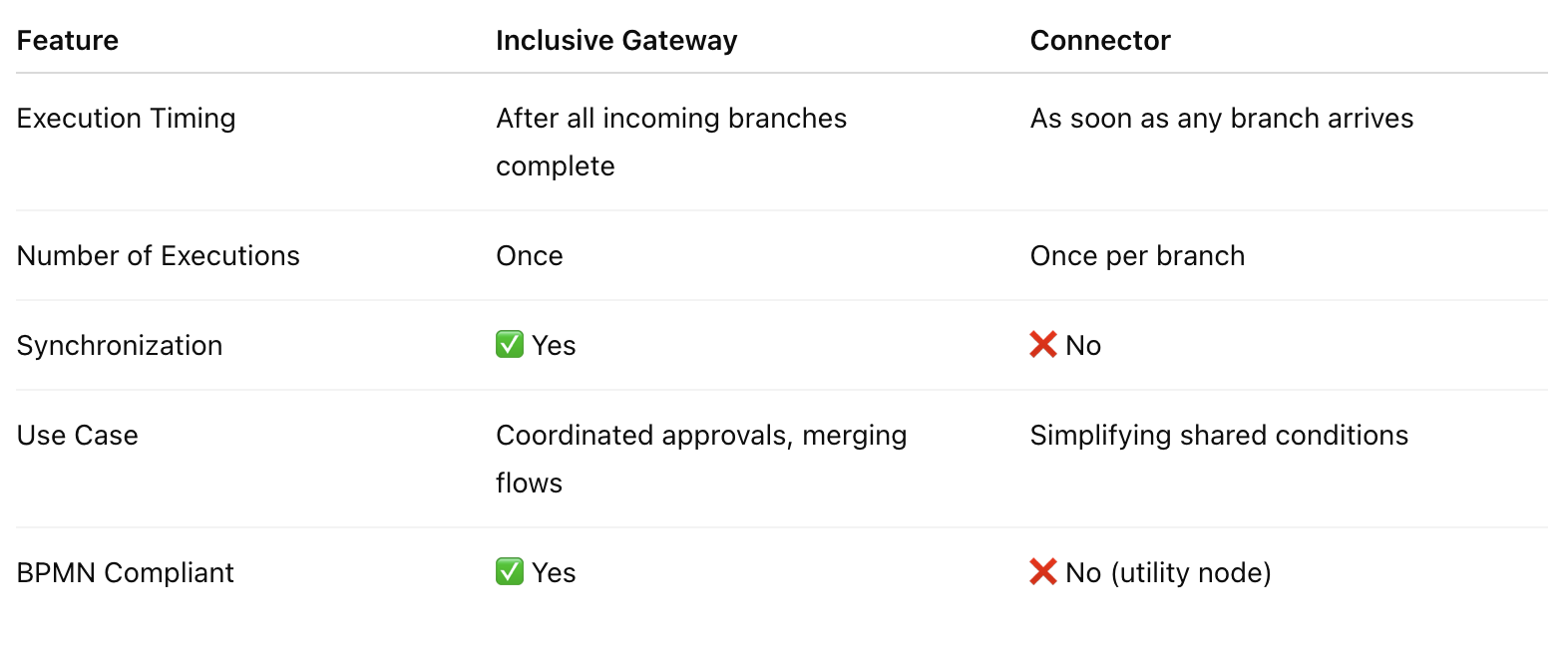
📣 Final Thoughts
The Inclusive Gateway and Connector are powerful tools—but they serve very different needs. Mastering both allows workflow designers to:
- Reduce errors
- Simplify maintenance
- Improve execution accuracy
- Enhance overall workflow efficiency
Whether you're managing leave approvals, budget routing, or parallel task consolidation, choosing the right action ensures your automation runs smoothly.
🚀 Ready to Build?
Try both in the Yeeflow Workflow Designer. Experiment with merging paths, simplifying conditions, and testing execution timing. You'll quickly appreciate how these tools help build workflows that are both clear and powerful.
Need guidance? Visit our Help Center or reach out to our team.

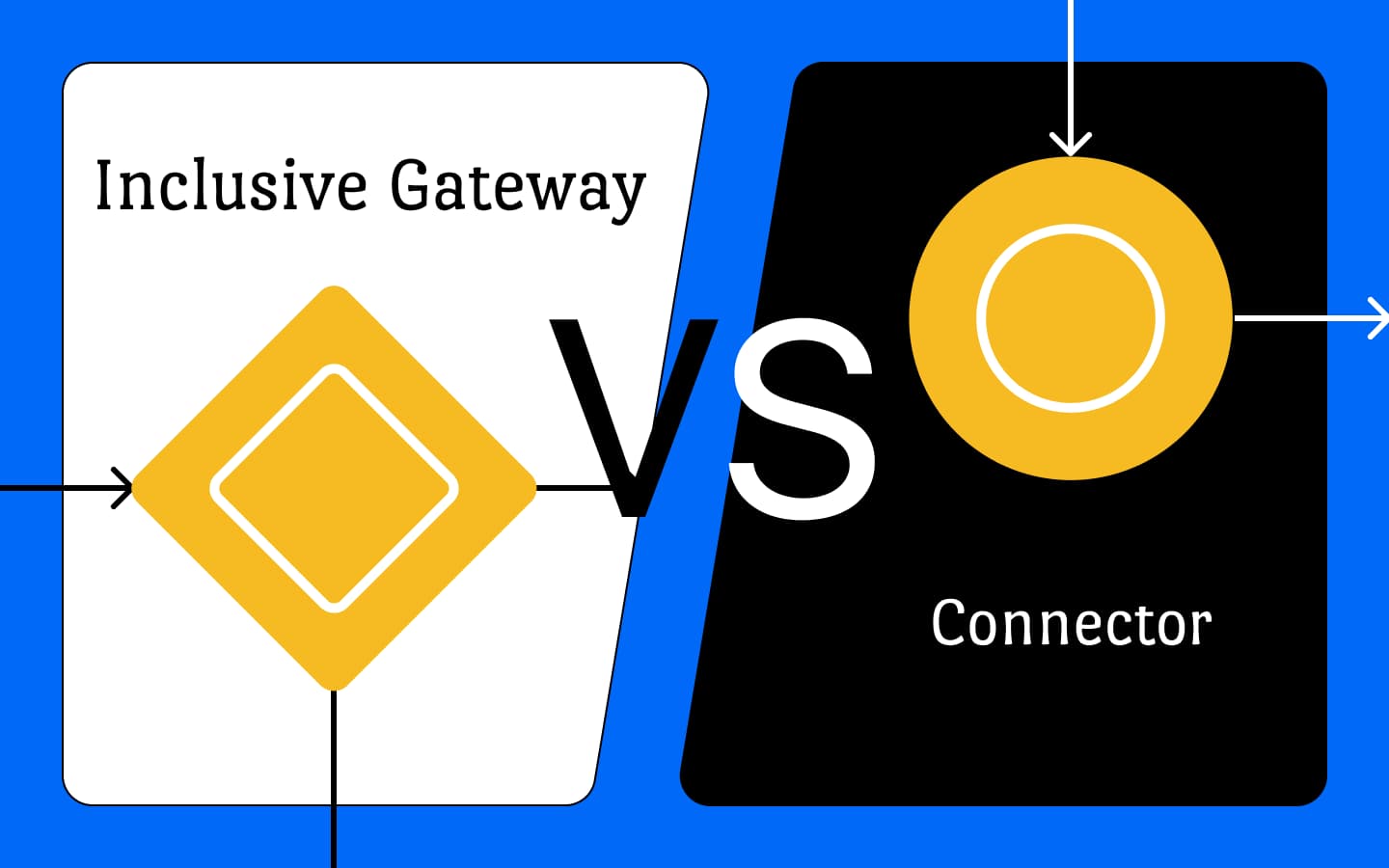

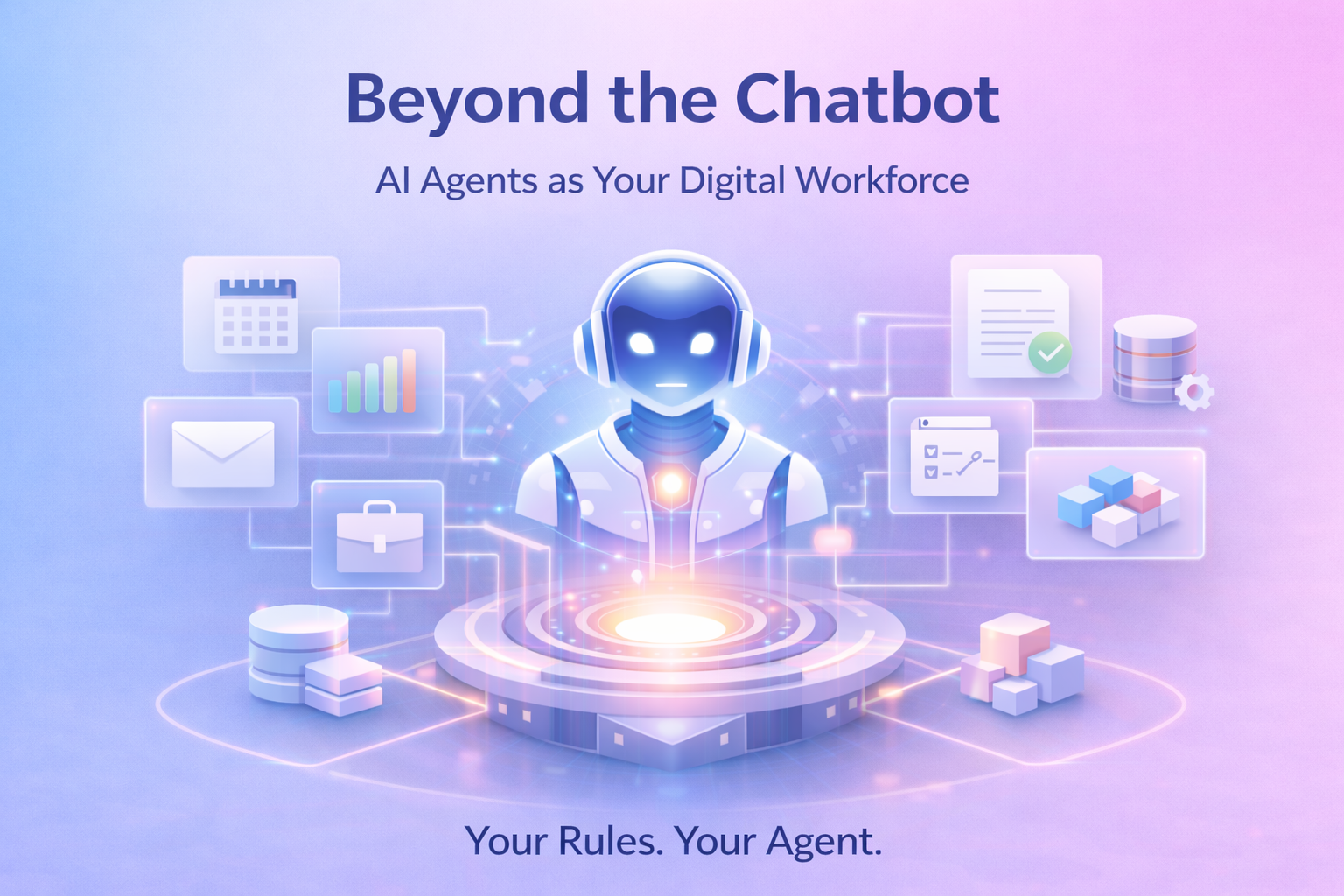
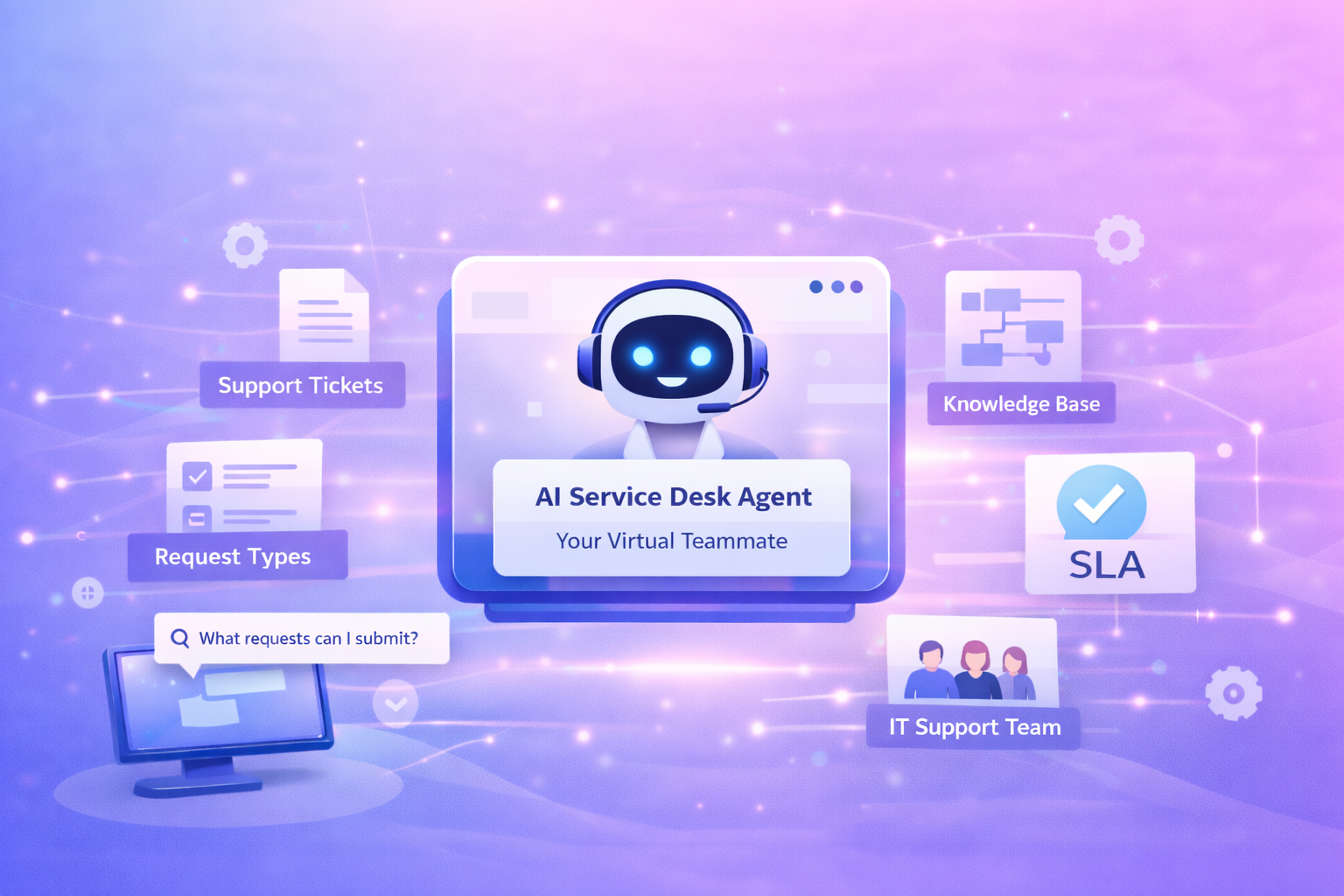
.png)

